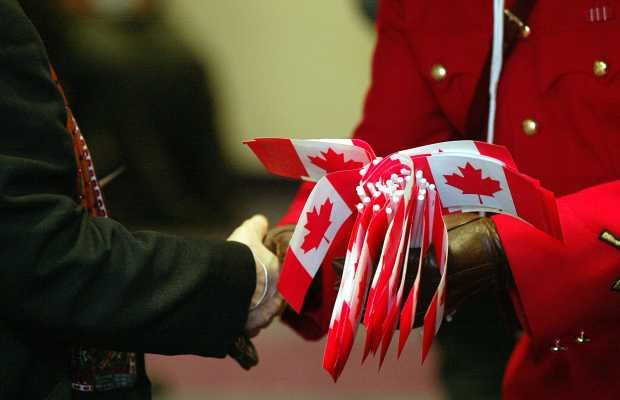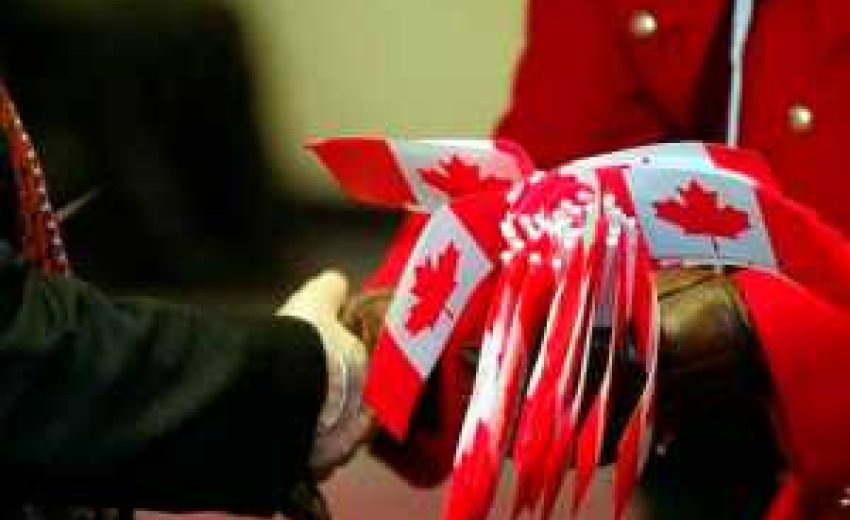 |
| One of the most enduring misconceptions about Canada's immigration policy is the idea that, ever since the eary '70s, Canada has styled itself as a 'mosaic' that encourages immigrants to maintian their old values and tradtions. Photograph by: Chris Mikukla, The Ottawa Citizen |
December 22, 2011: It would be a lot easier to debate the tough cases of Canadian multi-culturalism if people understood how the system actually works. That includes everyone from taxi drivers and barbers to those who spend their time trolling the comment boards of political blogs or loitering around the virtual water-coolers of social media. It includes radio and television hosts, editorialists and pundits. And it also includes the Citizenship and Immigration minister himself, Jason Kenney, who last week announced that henceforward, anyone who takes the oath of citizenship must do so unveiled and uncovered.
Announcing the new policy in Montreal, Kenney said that it is “a matter of pure principle, which lies at the heart of our identity and values with respect to openness and equality.” The citizenship ceremony, he went on, “defines who we are as Canadians including our mutual responsibilities to one another and a shared commitment to values that are rooted in our history.”
For conservatives, a Canadian immigration minister using words like “we” and “our” and making forceful references to “shared values” is like the scene in A Fish Called Wanda where Kevin Kline seduces Jamie Lee Curtis with his cannonball Italian: you could hear the moans of ecstasy of the right-wing pundits from Tofino to Torbay.
For the rest of us, it is another lost opportunity for our leaders to educate Canadians about how their country functions, what holds it together, and how we can think about how to reasonably accommodate newcomers. Because here’s the plain truth: Canadians don’t have shared values. We never have, and we never will. But that’s not a problem, because the ongoing cohesion of Canadian society is not seriously threatened by deep pluralism. If it was, we would never have got past the sectarian, linguistic, and cultural divides of the 19th century.
Canada is a liberal democracy, and like similar societies, it is designed to allow us to get along despite widespread and non-negotiable disagreements over values — that is, over how people should live their lives. Our political institutions, underwritten by constitutional declarations such as the Charter of Rights and Freedoms, don’t assume that citizens have shared values. Instead, they work by providing a framework that is neutral with respect to controversial questions of value. This neutrality is what underwrites our freedoms of expression, of religion, and of association. It is also what motivated a young Pierre Trudeau to declare that the state has no business in the bedrooms of the nation, and which inevitably led to homosexuals winning the right to marry.
What does this have to do with immigration?
One of the most enduring misconceptions about Canada’s immigration policy is the idea that, ever since the early ’70s, Canada has styled itself as a “mosaic” that encourages immigrants to maintain their old values and traditions. This has outraged those who believe that the only way to save Canadian society is to force immigrants to “assimilate,” that is, to adopt our notional shared values. But this is a false dichotomy. Canada certainly does not try to assimilate immigrants, but we don’t offer a mosaic either. Rather, the institutions and policies we have designed are aimed at the middle path of successful integration: allowing newcomers to keep as much of their cultural traditions as possible, while providing the means for their full participation in civic life.
The classic example is the debate over the Sikh Mountie who asked for permission to wear a turban instead of the traditional Stetson. While the idea made assimilationists want to chew leather, they failed to understand that the whole point of permitting the turban was to integrate the Sikh community into one of Canada’s most visible and important institutions. The alternative — banning the turban — would have the perverse effect of alienating the Sikh community from the national police force, contributing to the very cultural isolation that assimilationists claim to abhor.
On the other side there is the case this week of the kindergarten student in Montreal who will be allowed to wear a noise-reducing headset in class, because her Muslim parents say their religious beliefs don’t allow the five-year-old girl to listen to music. The school’s reasoning was that it was a reasonable compromise that would help the girl integrate into the school system, since the alternative would be that her parents would keep her out of school altogether.
This is the underlying structure of every debate of this kind that Canada has had over the years. From kirpans in schools to the use of Shariah in family law, the goal has never been to turn the country into a land of isolated communities. Instead, it has been to find a reasonable accommodation of cultural difference that integrates newcomers into a shared civic space.
This does not mean that such an accommodation can always be found, and people can reasonably disagree over how far is too far. But it does provide a way of thinking about the issue that avoids references to a shared culture and shared set of values that exists only in the minds of xenophobes and politicians on the stump.
Andrew Potter is the Citizen’s managing editor. Follow him on Twitter at Twitter.com/jandrewpotter.
© Copyright (c) The Ottawa Citizen

